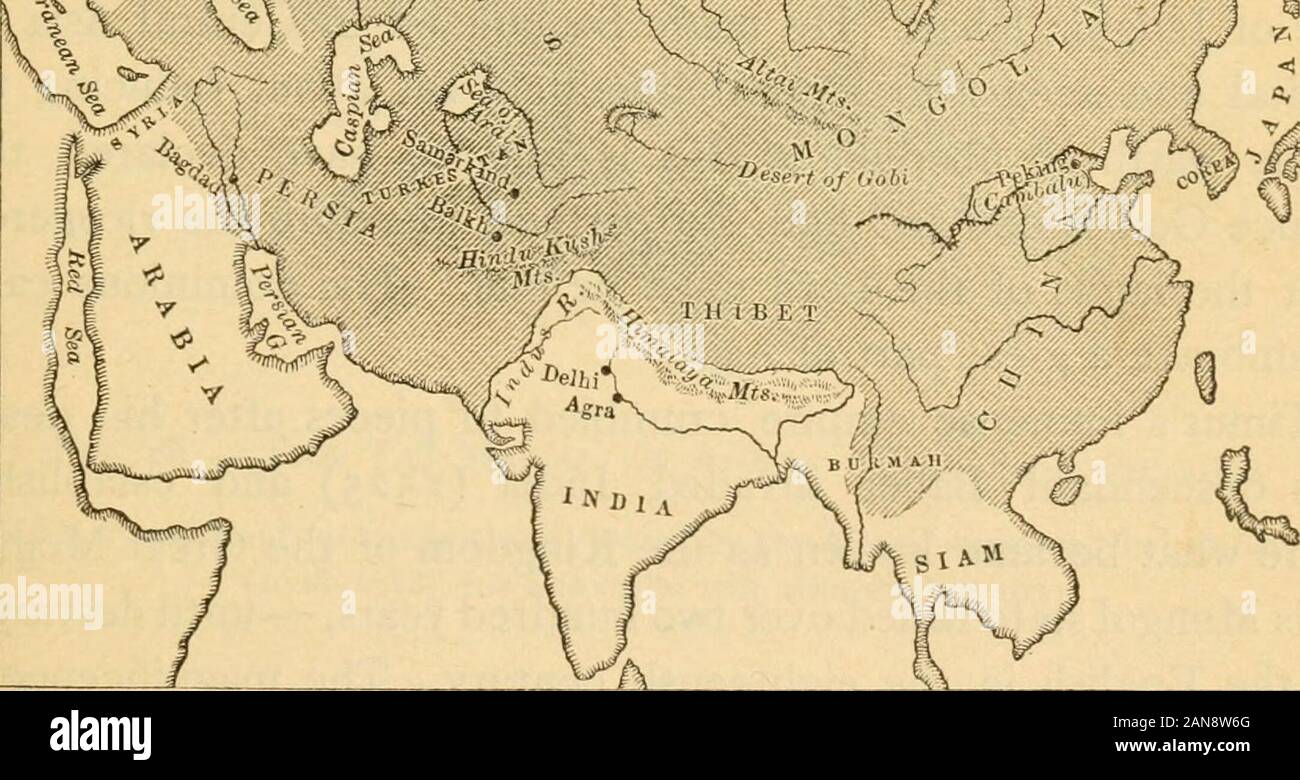Mediaeval and modern history . The Mongol Empire under Jenghis Khan and his ImmediateSuccessors (thirteenth century) The shaded area shows the countries either under the direct rule of theMongols or tributary to them many others were burned and their inhabitants slain. In thespace of two or three terrible years (i 238-1241) almost half ofEurope was pitilessly ravaged. The inhabitants of the other halfseemed to be stunned. They made no concerted efforts to checkthe progress of the invaders. They apparently regarded the l62 THE MONGOLS AND THE OTTOMAN TURKS visitation as though it were some dest

Image details
Contributor:
The Reading Room / Alamy Stock PhotoImage ID:
2AN8W6GFile size:
7.1 MB (369.5 KB Compressed download)Releases:
Model - no | Property - noDo I need a release?Dimensions:
2168 x 1152 px | 36.7 x 19.5 cm | 14.5 x 7.7 inches | 150dpiMore information:
This image is a public domain image, which means either that copyright has expired in the image or the copyright holder has waived their copyright. Alamy charges you a fee for access to the high resolution copy of the image.
This image could have imperfections as it’s either historical or reportage.
Mediaeval and modern history . The Mongol Empire under Jenghis Khan and his ImmediateSuccessors (thirteenth century) The shaded area shows the countries either under the direct rule of theMongols or tributary to them many others were burned and their inhabitants slain. In thespace of two or three terrible years (i 238-1241) almost half ofEurope was pitilessly ravaged. The inhabitants of the other halfseemed to be stunned. They made no concerted efforts to checkthe progress of the invaders. They apparently regarded the l62 THE MONGOLS AND THE OTTOMAN TURKS visitation as though it were some destructive convulsion of naturefor which there was no help or remedy. Fortunately, just at thiscritical moment Oktai died. Batu was recalled to Asia, and thecivilization of Western Europe escaped the threatened destruction. One of the most noted of the successors of Oktai was KublaiKhan (1259-1294), who made Cambalu, the modern Peking, hisroyal seat, and there received ambassadors and visitors from allparts of the world. It was a